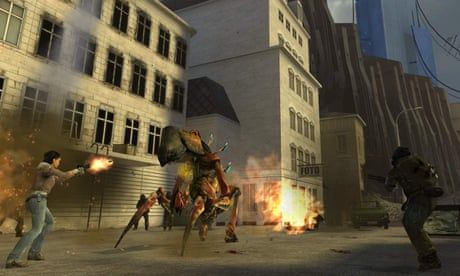
On the 20th anniversary of the seminal game, we look back at the extraordinary moment where sci-fi dystopia turned into tense and terrifying body horror
At the start of Valve’s Half-Life 2, the seminal first-person shooter game that turns 20 this month, taciturn scientist Gordon Freeman is trapped within a dystopian cityscape. Armed soldiers patrol the streets, and innocent citizens wander around in a daze, bereft of purpose and future. Dr Wallace Breen, Freeman’s former boss at the scientific “research centre” Black Mesa, looks down from giant video screens, espousing the virtues of humankind’s benefactors, an alien race known as The Combine.
As Freeman stumbles through these first few levels of Half-Life 2, the player acclimatises to the horrible future laid out before them. It’s hardly the most cheerful setting, but there are some friendly faces (security guard Barney, Alyx and Eli Vance) and even moments of humour, as Dr Isaac Kleiner’s pet, a debeaked face-eating alien called Lamarr, runs amok in his laboratory. It feels safe. It feels fun. It feels familiar. There’s even a crowbar! And then, the foreshadowing. “That’s the old passage to Ravenholm,” mutters Alyx Vance during Freeman’s chapter five tour of the Black Mesa East facility. “We don’t go there any more.” You feel a shiver down your spine; you know you will end up going there.
Continue reading...